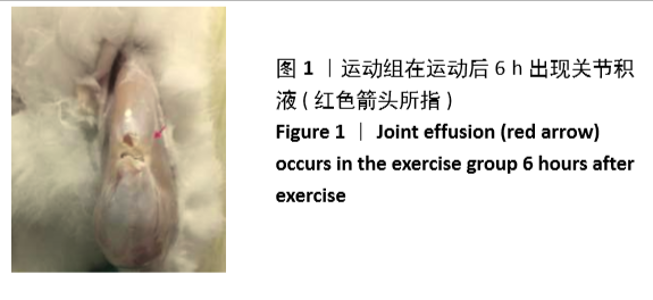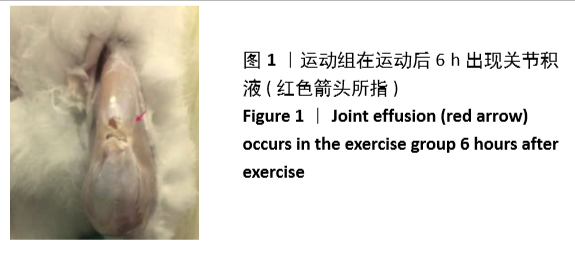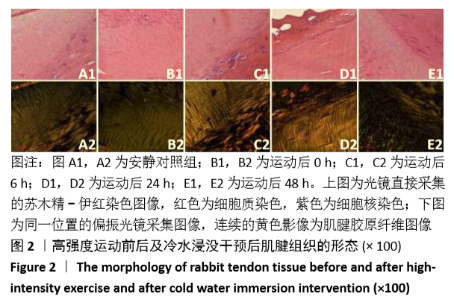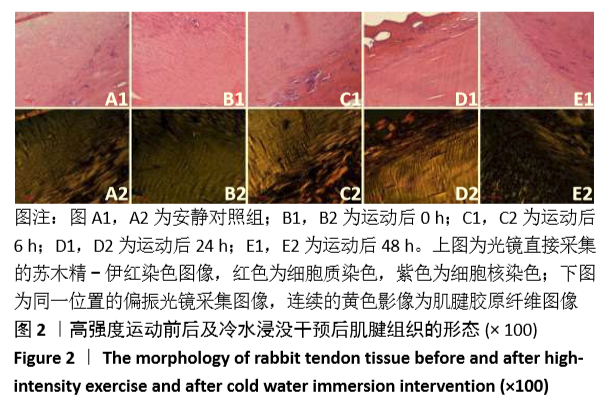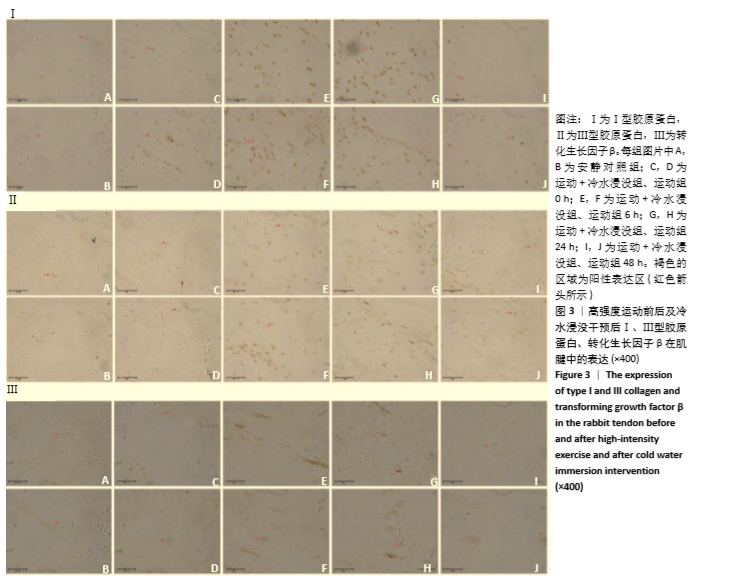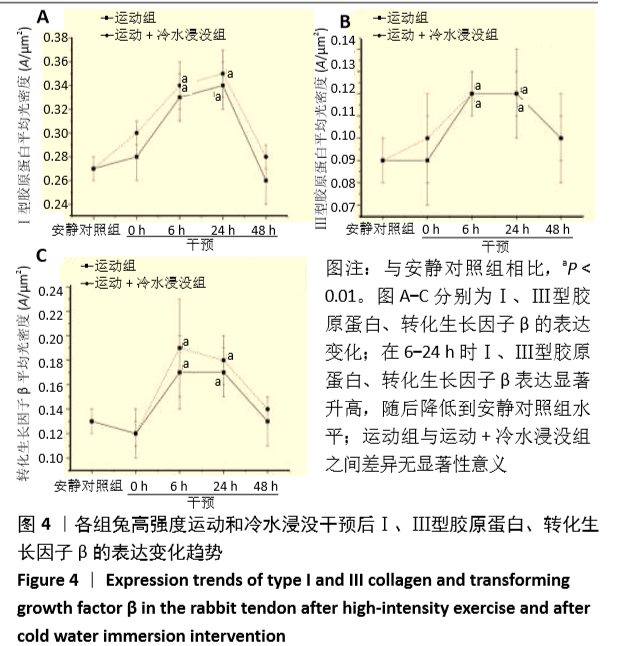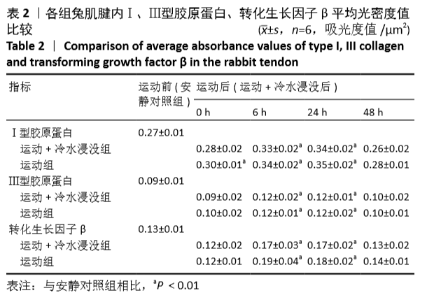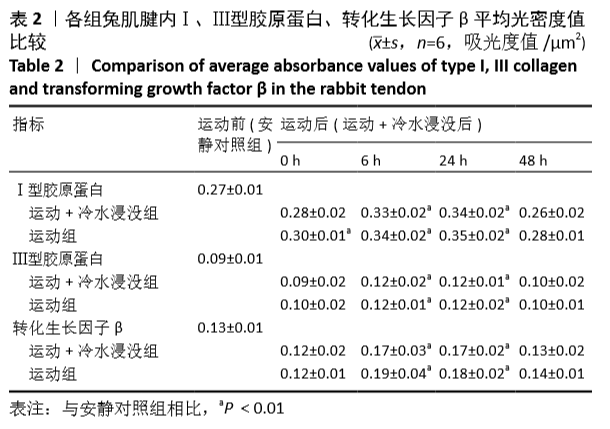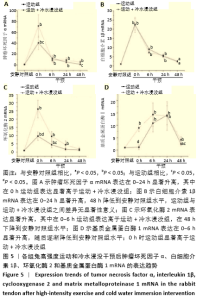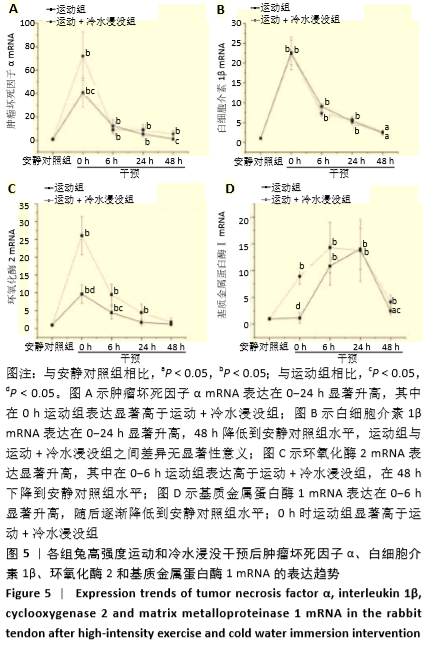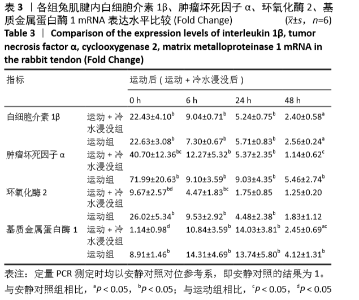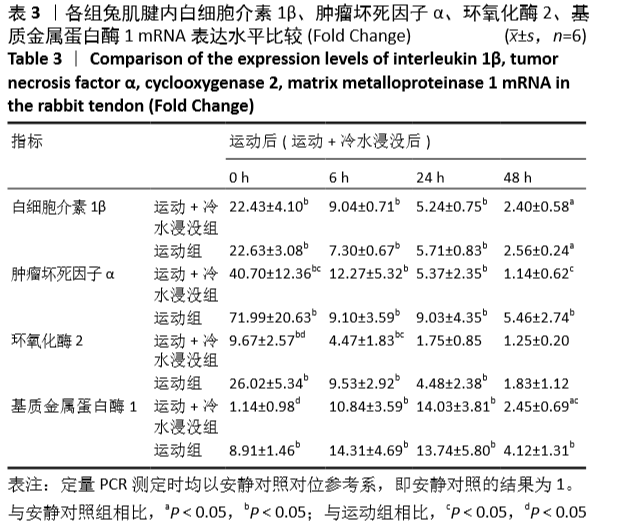[1] LANGBERG H, ROSENDAL L, KJAER M. Training-induced changes in peritendinous type I collagen turnover determined by microdialysis in humans. J Physiol. 2001;534(Pt 1):297-302.
[2] GUMP BS, MCMULLAN DR, CAUTHON DJ, et al. Short-term acetaminophen consumption enhances the exercise-induced increase in Achilles peritendinous IL-6 in humans. J Appl Physiol (1985). 2013;115(6):929-936.
[3] SCHULZE-TANZIL G, AL-SADI O, WIEGAND E, et al. The role of pro-inflammatory and immunoregulatory cytokines in tendon healing and rupture: new insights. Scand J Med Sci Sports. 2011;21(3):337-351.
[4] SHAPIRO E, GRANDE D, DRAKOS M. Biologics in Achilles tendon healing and repair: a review. Curr Rev Musculoskelet Med. 2015;8(1):9-17.
[5] ACCORNERO F, KANISICAK O, TJONDROKOESOEMO A, et al. Myofiber-specific inhibition of TGFbeta signaling protects skeletal muscle from injury and dystrophic disease in mice. Hum Mol Genet. 2014;23(25):6903-6915.
[6] FARHAT YM, AL-MALIKI AA, CHEN T, et al. Gene expression analysis of the pleiotropic effects of TGF-beta1 in an in vitro model of flexor tendon healing. PLoS One. 2012;7(12):e51411.
[7] LING Y, PENG C, LIU C, et al. Gene polymorphism of IL-6 and MMP-3 decreases passive range of motion after rotator cuff repair. Int J Clin Exp Pathol. 2015;8(5):5709-5714.
[8] Nourissat G, Berenbaum F, Duprez D. Tendon injury: from biology to tendon repair. Nat Rev Rheumatol. 2015;11(4):223-233.
[9] Kjaer M, Bayer ML, Eliasson P, et al. What is the impact of inflammation on the critical interplay between mechanical signaling and biochemical changes in tendon matrix? J Appl Physiol (1985). 2013;115(6):879-883.
[10] GEARY MB, ORNER CA, BAWANY F, et al. Systemic EP4 Inhibition Increases Adhesion Formation in a Murine Model of Flexor Tendon Repair. PLoS One. 2015;10(8):e0136351.
[11] GALLELLI L, GALASSO O, FALCONE D, et al. The effects of nonsteroidal anti-inflammatory drugs on clinical outcomes, synovial fluid cytokine concentration and signal transduction pathways in knee osteoarthritis. A randomized open label trial. Osteoarthritis Cartilage. 2013;21(9):1400-1408.
[12] WILCOCK IM, CRONIN JB, HING WA. Physiological response to water immersion: a method for sport recovery? Sports Med. 2006;36(9):747-765.
[13] Versey NG, Halson SL, Dawson BT. Water immersion recovery for athletes: effect on exercise performance and practical recommendations. Sports Med. 2013;43(11):1101-1130.
[14] MANIAS P, STASINOPOULOS D. A controlled clinical pilot trial to study the effectiveness of ice as a supplement to the exercise programme for the management of lateral elbow tendinopathy. Br J Sports Med. 2006;40(1):81-85.
[15] KOYONOS L, OWSLEY K, VOLLMER E, et al. Preoperative cryotherapy use in anterior cruciate ligament reconstruction. J Knee Surg. 2014;27(6): 479-484.
[16] WHITE GE, RHIND SG, WELLS GD. The effect of various cold-water immersion protocols on exercise-induced inflammatory response and functional recovery from high-intensity sprint exercise. Eur J Appl Physiol. 2014;114(11):2353-2367.
[17] COSTELLO JT, DONNELLY AE, KARKI A, et al. Effects of whole body cryotherapy and cold water immersion on knee skin temperature. Int J Sports Med. 2014;35(1):35-40.
[18] MACHADO AF, FERREIRA PH, MICHELETTI JK, et al. Can Water Temperature and Immersion Time Influence the Effect of Cold Water Immersion on Muscle Soreness? A Systematic Review and Meta-Analysis. Sports Med. 2016;46(4):503-514.
[19] 江大雷. 髌骨髌腱结合部跳跃损伤动物模型建立及运动后冷疗对损伤的影响[D].北京:北京体育大学,2015.
[20] VROMANS BA, THORPE RT, VIROUX PJ, et al. Cold water immersion settings for reducing muscle tissue temperature: a linear dose-response relationship. J Sports Med Phys Fitness. 2019;59(11):1861-1869.
[21] MEDEIROS R, FIGUEIREDO CP, PANDOLFO P, et al. The role of TNF-alpha signaling pathway on COX-2 upregulation and cognitive decline induced by beta-amyloid peptide. Behav Brain Res. 2010;209(1):165-173.
[22] TSUZAKI M, GUYTON G, GARRETT W, et al. IL-1 beta induces COX2, MMP-1, -3 and -13, ADAMTS-4, IL-1 beta and IL-6 in human tendon cells. J Orthop Res. 2003;21(2):256-264.
[23] KJAER M, LANGBERG H, MILLER BF, et al. Metabolic activity and collagen turnover in human tendon in response to physical activity. J Musculoskelet Neuronal Interact. 2005;5(1):41-52.
[24] THOMOPOULOS S, PARKS WC, RIFKIN DB, et al. Mechanisms of tendon injury and repair. J Orthop Res. 2015;33(6):832-839.
[25] AL-SADI O, SCHULZE-TANZIL G, KOHL B, et al. Tenocytes, pro-inflammatory cytokines and leukocytes: a relationship? Muscles Ligaments Tendons J. 2011;1(3):68-76.
[26] BURGER D AND DAYER JM. Cytokines, acute-phase proteins, and hormones: IL-1 and TNF-alpha production in contact-mediated activation of monocytes by T lymphocytes. Ann N Y Acad Sci. 2002;966:464-473.
[27] TOWNSEND JR, HOFFMAN JR, FRAGALA MS, et al. TNF-alpha and TNFR1 responses to recovery therapies following acute resistance exercise. Front Physiol. 2015;6:48.
[28] COCKERILL M, RIGOZZI MK, TERENTJEV EM. Mechanosensitivity of the 2nd Kind: TGF-beta Mechanism of Cell Sensing the Substrate Stiffness. PLoS One. 2015;10(10):e0139959.
[29] MORITA W, SNELLING SJB, WHEWAY K, et al. ERK1/2 drives IL-1β-induced expression of TGF-β1 and BMP-2 in torn tendons. Sci Rep. 2019;9(1):19005
|
